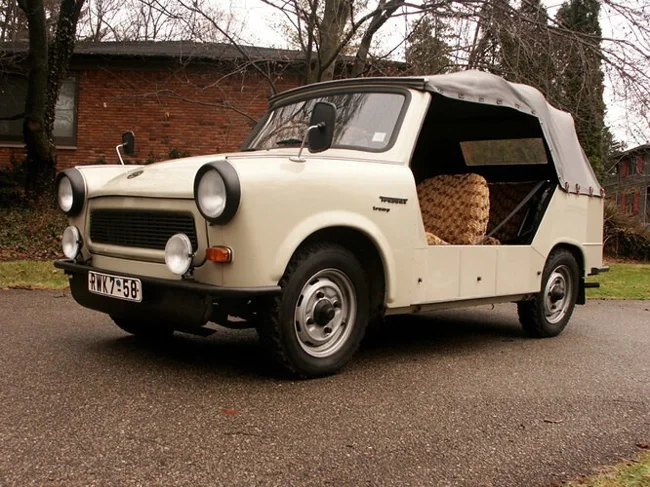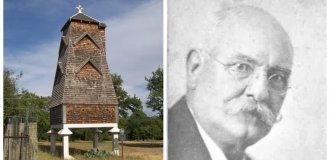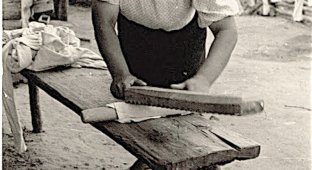Another "People's Car" of Germany (10 photos)
When the topic of the people's car comes up, almost everyone remembers Volkswagen and specifically the Beetle. However, few people know about a car like the Trabant, which was never perfect, but this East German tarantass is a real unique one and generally one of the most advanced cars of the 1950s. 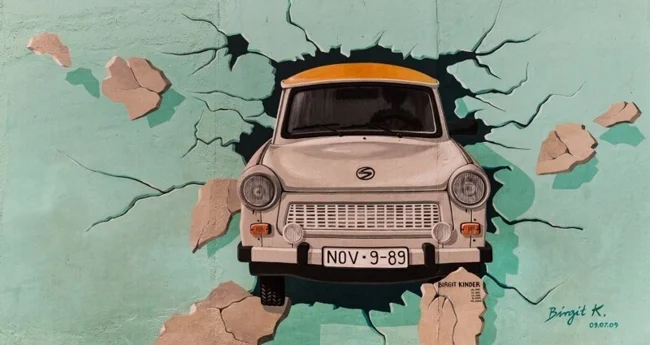
It was not all-plastic
In fact, contrary to rumors, this car was built on a classic platform welded from steel stampings, on which plastic elements were hung: doors, fenders, roof. They were made of duroplast, a patented mixture of carbolic acid (phenolic plastic), hardener and reinforcing filler made from cotton waste. The Trabi's body was eternal and, importantly, cheap. 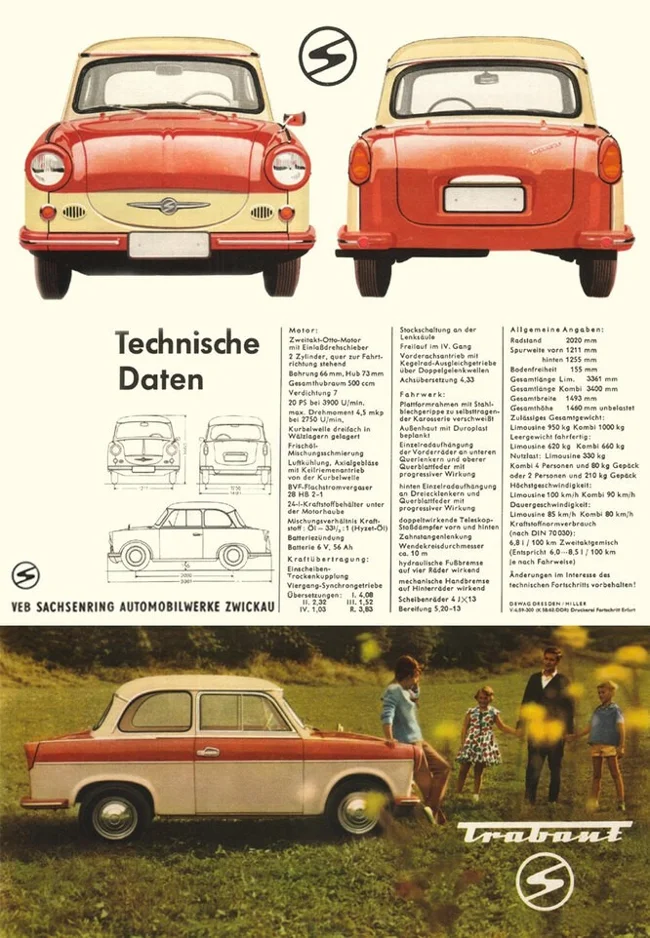
The use of plastic was a forced measure: rolled steel was in terrible shortage in the GDR, so the engineers had to be creative. They got around it, it must be admitted, gracefully: gluing fiberglass parts was a complex and incredibly labor-intensive process, economically viable only on a small scale. And the duroplast body panels were made by simple stamping - ideal for a people's car. 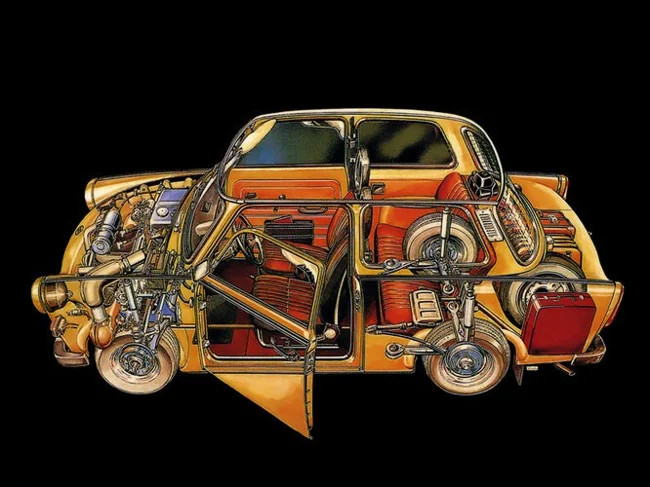
It had good dynamics
Here it is, the East German two-stroke heart. Note that the black box with the lid is the gas tank. The Trabant didn't have a fuel pump, the gasoline flowed into the carburetor by gravity. Safety? No, never heard of it. By the way, there was no fuel gauge either. They dipped a special dipstick into the tank and looked at how much fuel was left. If the gas ran out on the highway, the driver opened a special reservoir: there were still five liters of fuel in it. 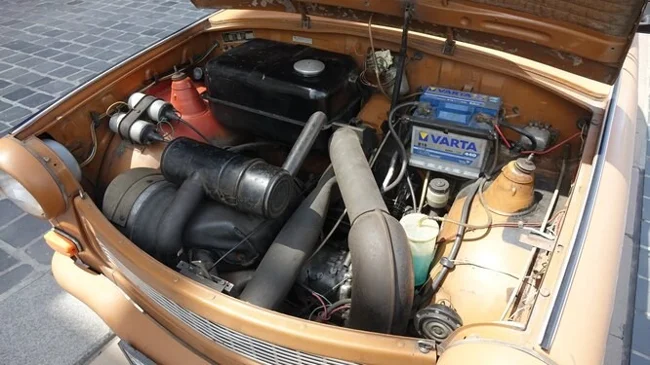
The subtle "Trabant" weighed next to nothing due to its design features - 620 kilograms (in the "combi" body - 20 kilograms more). The small equipment allowed saving on the engine: under the hood of the "Trabant" was a 2-stroke 600-cc unit, which in good weather produced 22 horsepower. The motorcycle buzzer managed to accelerate the car almost to "hundreds"! You say, not much? For its time, quite. 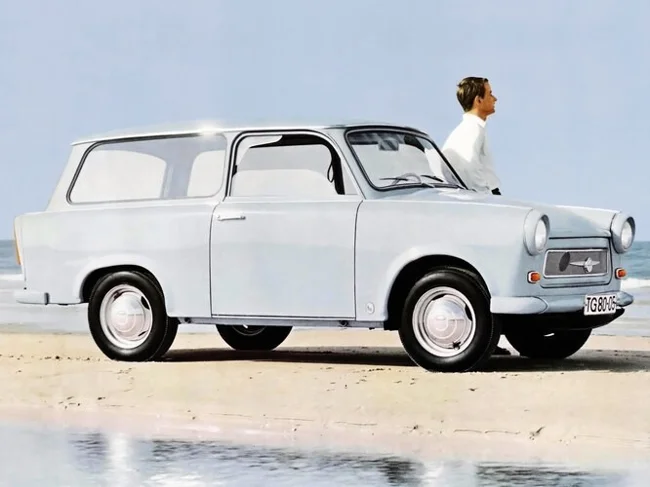
Of course, the Trabant engine, even by the standards of the 1950s, was very loud, environmentally unfriendly and generally archaic. No valves, no camshaft, it had only five moving parts, which meant there was nothing to break. Another advantage of the simplicity of the design was that it could be repaired even in an open field with a screwdriver, a crowbar and German swear words. Only since 1988, the modernized Trabi with a much more modern 1.1-liter 40-horsepower engine from the Volkswagen Polo went into production. 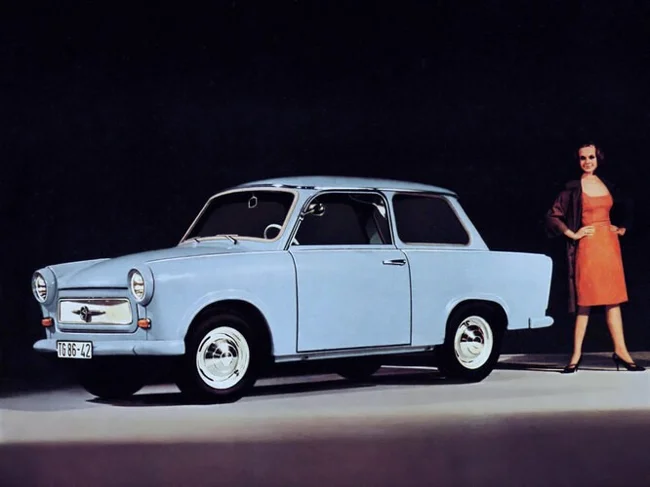
Firstly, "Trabi" was one of the first to introduce front-wheel drive to the mass market. The car's power unit had a very original layout for those years with a transverse engine and a final drive located between it and a two-shaft gearbox. Subsequently, this scheme became generally accepted and currently dominates the global automotive industry, but in those years, front-wheel drive with a transverse power unit outside the GDR was used only on Swedish SAAB cars. 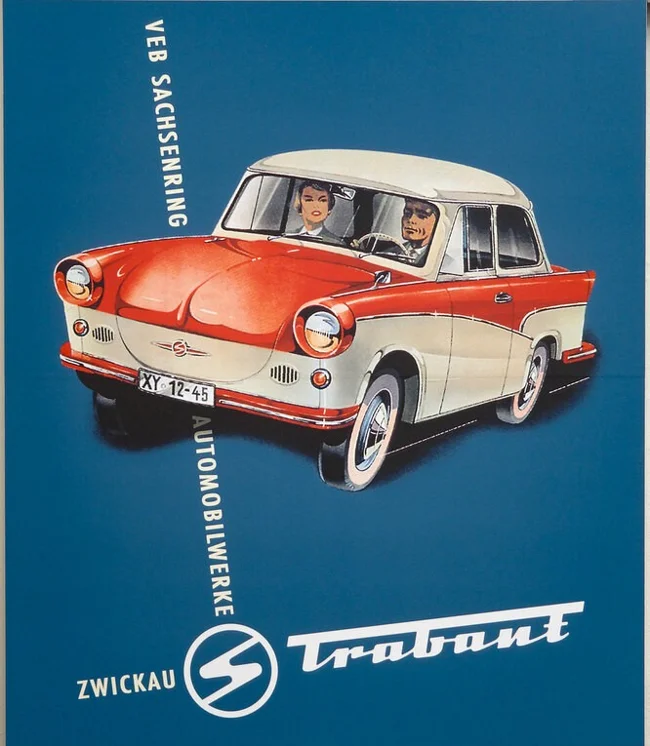
A luxury "Trabi"? Why not! There was one in the model range of the people's car. It was distinguished by a two-tone paint job, "rich" decor in the form of chrome moldings and... nothing else
Secondly, it had independent suspension on all wheels. At the front, it was a design with stamped lower A-shaped levers and a transverse spring, playing the role of upper levers. The rear suspension was also made on a transverse spring, but its tubular levers were diagonal, fixed to the body through thick elastic rubber washers instead of silent blocks. Thirdly, the steering was rack and pinion type - no "worm". In addition to simplicity, all this in the coupe made the control and comfort worthy of a car of a much higher class. 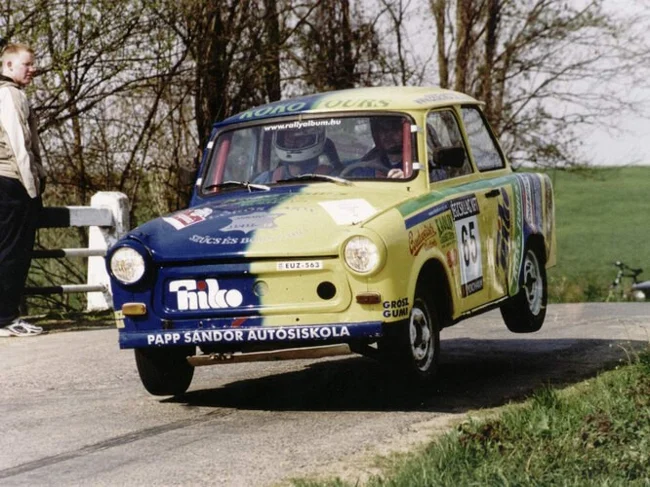
A flying "Trab"? No, there was no such version in the model line. But there were many rallies and circuit races in which the little car not only participated, but even won. Here you have a plastic tarantass
There were versions of the "Trabant" with a semi-automatic gearbox
Yes, yes, this is not a typo. Some cars, mainly intended for disabled people, were equipped with a Hycomat semi-automatic transmission. The driver shifted gears manually, but the clutch was automatic, controlled by an electromechanical unit through a special hydraulic system. How do you like that? There was still half a century left until DSG... By the way, another technical feature of the Trabant transmission is synchronizers on all four gears. 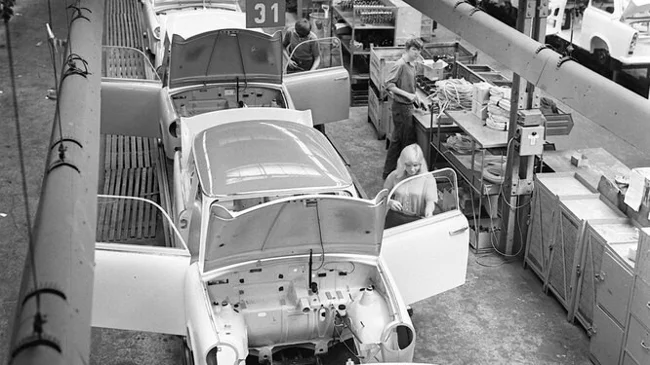
Everything is clean and tidy. In the central part of the engine shield there is a pipe sticking out - this is a tunnel for the gearshift handle
It was cheaper than the Zaporozhets and was sold all over the world
This is not a victim of "kolkhozing", but a fully-fledged serial modification of the Tramp. Moreover, at first the open version of the Trabant was built for the military, and then modernized for civilian use and supplied to warm countries
Conceived as a people's car, the Trabi was the cheapest passenger car in the GDR. It cost a little more than a motorcycle with a sidecar, and over time the price gradually decreased. During the entire production of the Trabant, production volumes did not keep up with demand, and buyers had to wait their turn for years, in some cases 13 years or more. You won't believe it, but the Trabant was exported to socialist countries (Czechoslovakia, Poland, Hungary) and even supplied to capitalists in Greece, the Netherlands, Belgium, South Africa and Great Britain. The total circulation of the Trabant from 1958 to 1991 exceeded three million copies. 